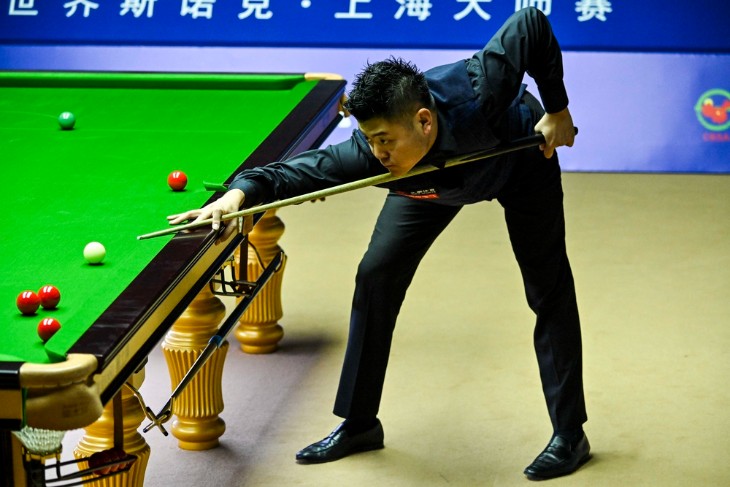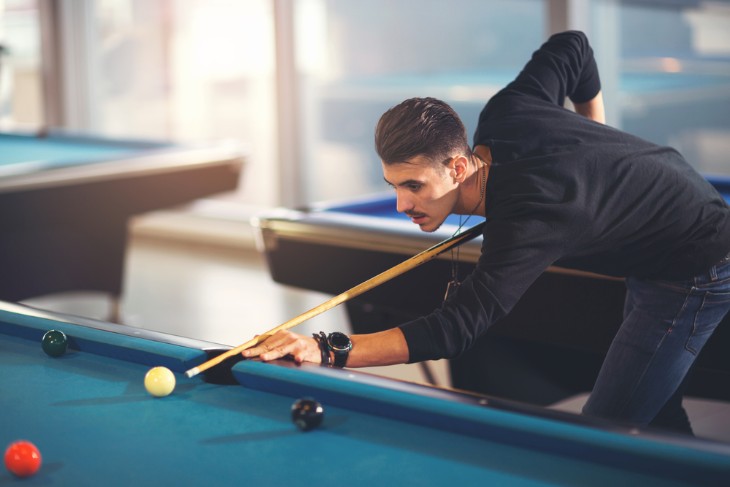- Science Meets Snooker
- Biomechanics in Snooker
- Nutritional Science and Snooker Performance
- Psychology and Mental Training in Snooker
- Physiological Factors in Snooker Excellence
- Data Analytics in Snooker Strategy
- Equipment and Technology Advancements
- Injury Prevention and Recovery in Snooker
- The Role of Sports Science in Snooker Coaching
- Conclusion
Over the years, the world of snooker has evolved significantly, and so has the approach to training and performance enhancement. In its early days, snooker was more of an art form, with players relying on their natural talent and intuition. However, as the sport gained popularity and competition intensified, the need for a structured training regimen became evident. This marked the beginning of the evolution of snooker training.
In the mid-20th century, snooker players began to incorporate elements of sports science into their training routines. They recognized the importance of physical fitness, mental resilience, and strategic thinking. As a result, snooker professionals started working with coaches and sports scientists to refine their skills. The advent of video analysis allowed players to scrutinize their technique and identify areas for improvement. This shift towards a more scientific and data-driven approach laid the foundation for the role sports science would eventually play in snooker training, setting the stage for a new era in the sport's history.
Science Meets Snooker
The convergence of science and snooker has brought about a revolution in the sport's training methods and performance enhancement techniques. Sports science has introduced a systematic and evidence-based approach to snooker training. Professionals and enthusiasts alike are now benefiting from a deeper understanding of biomechanics, psychology, nutrition, and data analysis as they apply to snooker.
Biomechanics, for example, plays a crucial role in optimizing a player's stance, grip, and cue action. By employing motion capture technology, experts can analyze a player's movements with precision, identifying any inefficiencies or inconsistencies. These insights allow snooker players to refine their technique for greater accuracy and consistency on the table. Additionally, psychological training techniques help players develop mental toughness, concentration, and the ability to manage pressure during high-stakes matches.
Biomechanics in Snooker
Biomechanics, the study of the mechanical aspects of the human body's movements, has become an indispensable tool in the world of snooker. The precise coordination and execution of a snooker shot require a player to have a flawless cue action. Biomechanical analysis allows players and coaches to break down each element of the cueing process, from the stance to the follow-through, identifying areas that can be refined for greater accuracy and consistency.
One of the key aspects of biomechanics in snooker is the study of body alignment and balance. A player's stance, the positioning of their feet, and the alignment of their body relative to the shot angle can significantly impact the accuracy of their shots. Biomechanical experts use motion capture technology to record and analyze these aspects, providing visual feedback to players. This feedback helps players make necessary adjustments to their posture, ensuring that they are always in the best position to strike the cue ball accurately. Furthermore, biomechanics also aids in understanding the mechanics of cueing, including the arc and speed of the cue's movement. By optimizing these factors, players can achieve greater control over the cue ball's direction and spin, thus enhancing their overall performance on the snooker table.

Nutritional Science and Snooker Performance
In the realm of snooker, where precision and concentration are paramount, nutrition plays a critical role in maintaining peak performance. Nutritional science has provided invaluable insights into how diet can impact a snooker player's cognitive abilities, endurance, and overall well-being. Proper nutrition ensures that players have the mental acuity and physical stamina required for extended periods of focus on the snooker table.
Snooker players often face grueling match schedules, with matches sometimes lasting several hours. Maintaining stable blood sugar levels is essential for sustained concentration and energy. Nutritional science guides players in choosing foods that provide a slow and steady release of energy, such as complex carbohydrates, lean proteins, and healthy fats. Additionally, hydration is crucial to prevent mental fatigue and maintain alertness. Sports scientists work with snooker professionals to develop hydration strategies that keep players performing at their best throughout a match.
Psychology and Mental Training in Snooker
The mental aspect of snooker cannot be overstated. The ability to stay calm under pressure, maintain focus, and make sound decisions is often the difference between success and defeat on the snooker table. Sports psychology has emerged as a vital component of snooker training, helping players develop the mental fortitude required for high-level competition.
Psychological training in snooker encompasses various techniques, including visualization, goal setting, and mindfulness. Visualization allows players to mentally rehearse shots and scenarios, enhancing their ability to execute them accurately during a match. Goal setting helps players stay motivated and maintain a clear sense of purpose in their training and competition. Mindfulness techniques enable players to stay present in the moment, reducing anxiety and improving decision-making.
Moreover, dealing with the psychological challenges of snooker, such as handling pressure and maintaining composure in tight situations, is a key focus of sports psychology. Players learn to manage their emotions, control their breathing, and develop mental routines that prepare them for the mental rigors of competitive snooker.
Physiological Factors in Snooker Excellence
The physical demands of snooker may not be as apparent as those in more physically strenuous sports, but they are nevertheless significant. Understanding the physiological aspects of snooker is crucial for players who wish to maintain peak performance over extended periods. One of the key physiological factors in snooker excellence is the importance of cardiovascular fitness. Snooker matches can last for several hours, and maintaining focus and precision over such durations requires a high level of endurance. Sports scientists work with players to develop fitness routines that improve cardiovascular health, ensuring they remain mentally sharp throughout long matches.
Another vital physiological consideration in snooker is maintaining stable blood pressure and heart rate. Stress and pressure are inherent in competitive snooker, and fluctuations in heart rate and blood pressure can negatively affect a player's performance. Through physiological monitoring and biofeedback techniques, players can learn to regulate these vital parameters, keeping them within an optimal range for concentration and precision.
Data Analytics in Snooker Strategy
Data analytics has become an indispensable tool in the world of professional snooker. The sport's complex and strategic nature lends itself well to the meticulous analysis of player performance and match statistics. Advanced data analytics provide snooker players and coaches with insights that can significantly influence strategy and decision-making on the table.
One of the primary uses of data analytics in snooker is shot selection analysis. By studying historical data on shot success rates in different situations, players can make more informed choices about which shots to attempt during a match. This data-driven approach helps players minimize risk and maximize their chances of winning frames.
Moreover, data analytics in snooker extends to opponent analysis. Players and their teams can gather data on their opponents' playing styles, tendencies, and weaknesses. This information allows them to tailor their strategies to exploit these weaknesses and gain a competitive edge.
Equipment and Technology Advancements
The world of snooker has seen significant advancements in equipment and technology over the years. Cue design and construction have evolved to offer players greater precision and control. Modern cues are meticulously crafted to provide the perfect balance, weight, and feel, allowing players to execute shots with unparalleled accuracy. The development of cue tip materials has also improved cue ball control, giving players the ability to apply precise amounts of spin and English.
In addition to cue advancements, technology has played a substantial role in enhancing snooker equipment. The use of specially designed cue extensions, bridges, and rests has made it easier for players to reach difficult shots and maintain a consistent cueing action. Furthermore, advancements in table design and maintenance have ensured that playing surfaces are of the highest quality, promoting fair and consistent play.
The introduction of cue sports technology, such as cue ball tracking systems and ball path prediction software, has provided players with valuable insights into their performance. These technologies enable players to analyze their shots, measure their cue ball control, and refine their techniques with precision.

Injury Prevention and Recovery in Snooker
While snooker is not a physically demanding sport compared to many others, players are not immune to the risk of injuries. Common injuries in snooker often relate to posture and repetitive movements, such as back strain and wrist injuries. To mitigate these risks and ensure players remain in optimal condition, sports science has introduced injury prevention and recovery strategies tailored to the needs of snooker players.
Ergonomics plays a significant role in injury prevention. Sports scientists work with players to optimize their posture and biomechanics during play, reducing the strain on their bodies. Techniques such as stretching, warm-ups, and cooldowns are incorporated into players' routines to prepare their muscles and joints for the demands of snooker.
In the unfortunate event of an injury, rapid recovery is crucial. Sports science offers rehabilitation programs designed to expedite the healing process and get players back on the table as soon as possible. These programs often include physiotherapy, strength and conditioning exercises, and injury-specific treatments.
The Role of Sports Science in Snooker Coaching
Coaching is an integral component of snooker development, and the incorporation of sports science has elevated coaching standards in the sport. Professional snooker coaches now collaborate with sports scientists to provide a holistic approach to player improvement. These partnerships allow for a more structured and scientific coaching regimen, tailored to individual player needs.
One crucial aspect of snooker coaching that sports science enhances is video analysis. Coaches and players can review footage of matches and practice sessions in detail, pinpointing areas of improvement. This methodical approach to performance analysis enables players to make targeted adjustments to their technique and strategy. Moreover, sports scientists assist coaches in identifying physical and mental aspects that require attention, allowing for a comprehensive coaching experience.
Additionally, the role of data analytics in snooker coaching cannot be understated. Coaches can access detailed statistics on player performance, helping them tailor training plans to address weaknesses and further develop strengths. This data-driven coaching approach fosters continuous improvement and maximizes player potential.
Conclusion
In the ever-evolving world of snooker, the integration of sports science has fundamentally altered the landscape of the sport. From its humble origins as a leisurely pastime, snooker has transformed into a highly competitive and mentally demanding discipline. Through Subjects exploring the fundamentals of snooker, the evolution of training, and the various aspects of sports science, we have witnessed the profound impact of scientific knowledge on the sport's development.
For more information:




.webp)


 (1).webp)




















